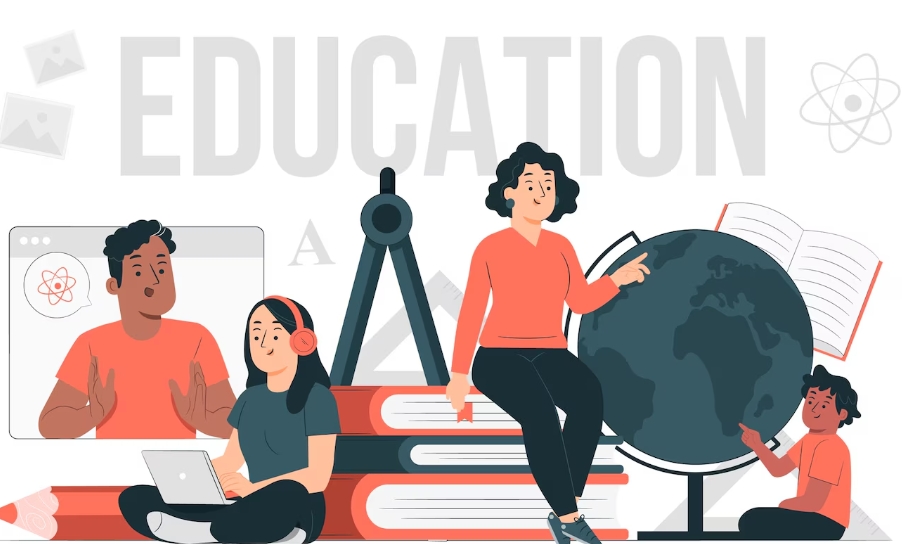Culture and education are connected
Students today grow up with phones in hand. They share photos, jokes, opinions, and more without thinking twice. But many of them don’t understand how long those posts last. What goes online stays online. That’s where culture-based education comes in.
Teaching students about their identity, values, and history helps shape how they see the world—and how they show up in it. When schools add culture into lessons, students not only learn about their roots, they also learn how to represent themselves better online.
Why this matters in 2025
According to Pew Research, nearly 90% of teens in the U.S. have access to a smartphone, and most post online daily. Employers, universities, and even landlords now Google people before making decisions.
At the same time, 41% of Gen Z say they regret something they posted online. Many have no idea how to clean it up. Some end up searching for help with removing Google search results after seeing something from years ago show up on page one.
Culture-based learning teaches students to take pride in how they speak, act, and represent themselves—online and offline.
What is cultural education?
It’s more than food and holidays
Cultural education includes:
- Language and storytelling
- Family traditions
- Local history and heritage
- Respect and communication styles
- Art, music, and performance
When students explore these areas, they better understand who they are. That confidence shapes how they present themselves—especially online.
It’s personal
No two students learn the same way. When lessons include culture, students feel seen. They share their own stories and hear others. That builds empathy and awareness.
How online identity is tied to culture
Students learn from what they see
If a teen sees their friends sharing risky or offensive content, they might copy it. But if they’re taught that what they post reflects their name, family, and background, they think twice.
Cultural education helps students ask:
- “Does this represent me well?”
- “Would I show this to my grandmother?”
- “Will I be proud of this in five years?”
Real example
A high school in Perth added a year-long identity project. Students made short films about their culture, hometown, and what they want to be known for. One student, Eli, shared his dream of becoming a teacher like his uncle. When someone searched his name months later, Eli’s project was the first result—his story, in his words.
His teacher said, “He took more care with everything he posted after that. He knew people would see it.”
Practical steps schools can take
Add online awareness to the curriculum
Teach students how search engines work. Show them how a public comment or post can rank higher than their school website. Bring in real examples of athletes, artists, or activists whose old tweets hurt their careers.
Use free tools to look up what shows up when you search their name. Then show them how to take control of that space.
Teach media literacy through a cultural lens
Give students articles, videos, and memes. Ask them to spot bias, stereotypes, or respectful storytelling. Let them discuss how different cultures are portrayed online and why that matters.
Help them build their own content
Encourage blogs, websites, or portfolios that highlight their culture, values, and goals. These projects often show up higher in search than old social media.
Even one short “About Me” page with a clean photo and two paragraphs can shift how someone appears online.
Involve parents and local leaders
Host culture nights where families share stories, food, and art. Let students present what they’ve learned. Invite elders or community leaders to speak about respect, legacy, and online behaviour.
When students hear real-life consequences from someone they know, it sticks more than a lecture.
What to do when old content causes problems
Students mess up. It happens.
Maybe someone posted something years ago that no longer reflects who they are. It could be a joke, a comment, or a photo taken out of context. If that post shows up on Google, it can follow them for years.
This is where services like Reputation Database come in. They help individuals remove outdated, harmful, or misleading content from search results. They also offer advice on removing Google search results that break policies or were posted unfairly.
But prevention is always easier than clean-up. Teaching students how to avoid the mess in the first place is key.
What students say works best
Peer examples
Students learn more from each other than from adults. Share real stories about teens who lost job offers, scholarships, or relationships because of a post.
Also share success stories—students who used a class project or cultural blog to build a positive footprint.
Visual reminders
One school in New Zealand added mirrors to the back of classroom doors with the sign, “Is this how you want to be seen?” It sounds small, but students said it made them think before they posted.
Content building challenges
Turn it into a game. Give students a week to post three positive things—about themselves, their family, or their community. Give points for creativity, kindness, and originality. Celebrate the best ones.
Final thoughts
Students live online. That won’t change. But how they use the internet can.
When culture and education come together, students learn to lead with pride. They become more mindful of what they post and why. They see their online presence as part of their identity—not something separate.
And if a mistake happens, they also learn that they can fix it—with tools, support, and guidance.
Start early. Teach them to build a legacy, not just a timeline. The web will remember what they post. Make sure it remembers the best of them.
